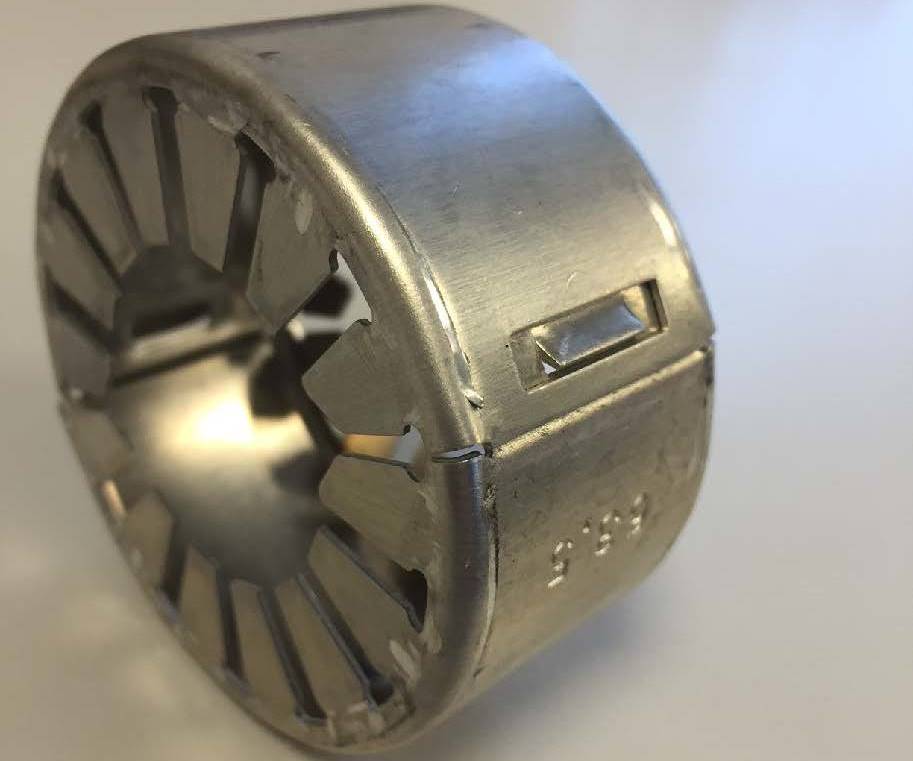Fin Tube Support Collar can prevent fin from damaging when put fin tubes together when delivered, also can be a support when installing fin tubes on air cooled heat exchangers.
Fin Tube Collars can be used in high vibration and long tube length applications. Fin Tube Collars also reduce wear on fins that can lead to tube failure. Fin Tube Collars offered include cast-zinc, silicon, metal band, and packed fin. We can also place mid-bare sections (no fins) for customer supplied supports. Fin Tube Collars can be placed at any point throughout the length of the tube. Dimensional specifications are closely maintained to ensure proper fit. Silicone Rubber Molded Finned Tube Support Collars
 Finned Tube supports collar
Finned Tube supports collarExpertise has a way of showing up in details, as is evidenced by the tube support systems. Next to the aluminium half tube support, the company supplies zinc collar supports. This latter system saves installation time and guarantees troublefree transport!
With our expertise supplies with the delivery of our finned tubes, the necessary aluminium half pipe supports (HPS). If you prefer to safe time during installation of the pipes, you can choose for half pipe supports (HPS) fitted on the tubes or casted zinc rings around the fin at certain distances.
Finned Tube Support Collar|Fin Tube Clamp Product description
Finned Tube Support Collar|Fin Tube Clamp Material: aluminum, galvanized steel, stainless steel size: od63.5mm, od73.5mm, etc.
Finned Tube Support Collar|Fin Tube Clamp Fin type: l. l. k. L.G fin tube, shape: round, hexagonal, octagonal.
Embedded aluminum finned tube round spacer box
The isolation ring is suitable for aluminum finned tube, extruded finned tube, L/LL/KL finned tube, and G fin tube.
Fin tube general core flexible tube: the outer diameter is 25.4mm, 31.75mm and 38.1mm respectively
We offers several different options to help provide stability and long life to our finned tubing.
Collars can be used in high vibration and long tube length applications. Collars also reduce wear on fins that can lead to tube failure.
Collars offered include cast-zinc, silicon, metal band, and packed fin.
We can also place mid-bare sections (no fins) for customer supplied supports. Collars can be placed at any point throughout the length of the tube.
Dimensional specifications are closely maintained to ensure proper fit.
Silicone Rubber Molded Finned Tube Support Collars
Comments
Post a Comment